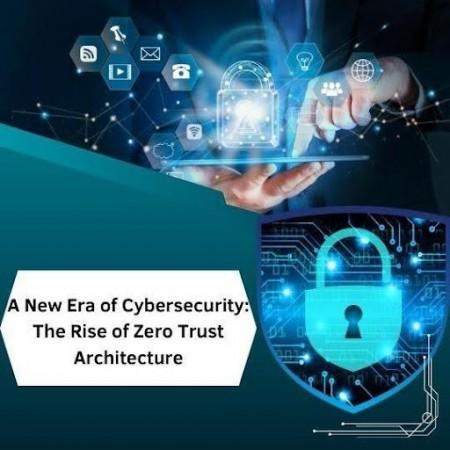
In the age of digital transformation, cybersecurity has undergone a paradigm shift with the rise of Zero Trust Architecture (ZTA). In an era where traditional security models fail to counter sophisticated cyber threats, Zero Trust offers a comprehensive approach that prioritizes continuous verification and least privilege access. Lakshmi Narayana Gupta Koralla, a prominent researcher in cybersecurity frameworks, explores the intricacies of Zero Trust and its transformative impact on data security.
Moving Beyond Perimeter-Based Security
Traditional security models rely on perimeter defenses, assuming threats come from outside. However, modern attacks exploit internal vulnerabilities, enabling lateral movement. Zero Trust replaces this outdated approach with "never trust, always verify," requiring strict authentication for every access request to prevent unauthorized access and enhance cybersecurity resilience.
Identity-Centric Security: The Heart of Zero Trust
Zero Trust places identity at the core of security strategies. Instead of assuming internal users are inherently trustworthy, organizations must implement strict authentication measures. Multi-factor authentication (MFA), biometrics, and behavioral analytics are integrated to continuously verify identities, reducing the risk of credential-based breaches.
Least Privilege Access: Limiting Lateral Movement
A key pillar of Zero Trust is enforcing least privilege access, granting users only the permissions necessary for their roles. This minimizes potential damage if credentials are compromised. Organizations can achieve this through role-based access control (RBAC) and just-in-time (JIT) access policies, ensuring that sensitive data remains protected from unauthorized users.
Data Classification and Encryption Strategies
Data protection is another crucial component of Zero Trust. Organizations must classify sensitive data and apply encryption to prevent unauthorized access. This approach ensures that even if an attacker infiltrates the system, they cannot easily exploit the data. End-to-end encryption and tokenization further enhance security by making stolen information useless to malicious actors.
Micro-Segmentation: Strengthening Network Security
Zero Trust employs micro-segmentation to compartmentalize network resources, preventing attackers from freely moving within an organization's infrastructure. By isolating workloads, applications, and data stores, micro-segmentation minimizes the blast radius of cyber incidents, containing threats before they escalate.
Continuous Monitoring and AI-Driven Security Analytics
Modern cybersecurity demands continuous monitoring and real-time threat detection. Zero Trust uses AI-driven analytics to detect anomalies, assess risks, and respond proactively by analyzing user behavior for deviations indicating potential breaches.
Integrating Zero Trust with Cloud and IoT Environments
As organizations shift towards cloud-native architectures and adopt Internet of Things (IoT) solutions, Zero Trust becomes even more critical. Traditional security models struggle to secure distributed environments, whereas Zero Trust ensures uniform security policies across cloud, edge computing, and IoT ecosystems. This integration enhances resilience against evolving cyber threats.
Overcoming Challenges in Zero Trust Implementation
Despite its advantages, adopting Zero Trust is not without challenges. Organizations often face resistance due to the complexity of implementation and potential disruptions to existing workflows. A phased approach, beginning with identity management and access controls, can streamline the transition. Additionally, executive buy-in and employee awareness programs are essential for successful adoption.
The Future of Cybersecurity with Zero Trust
Zero Trust Architecture is no longer an optional security framework it is a necessity in the modern digital landscape. With the increasing frequency of cyberattacks, organizations must embrace a proactive security posture that prioritizes continuous verification and stringent access controls. As research and technology evolve, Zero Trust will continue to shape the future of cybersecurity, ensuring resilient protection against emerging threats.
In conclusion, Lakshmi Narayana Gupta Koralla emphasizes that implementing Zero Trust is a strategic move toward safeguarding critical data assets. By leveraging identity-centric security, continuous monitoring, and adaptive access controls, organizations can establish a robust defense against cyber adversaries. The evolution of Zero Trust marks a new chapter in cybersecurity one where trust is never assumed but continuously verified.









